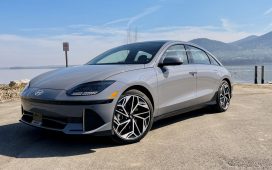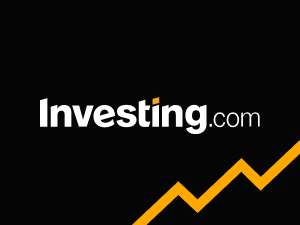Hyperloop One, the futuristic transportation startup that promised to whisk us through nearly airless tubes at airline speeds, is shutting down, according to Bloomberg.
The company is selling off its assets, closing down its offices, and laying off employees. It will formally close at the end of the year, at which point all of its intellectual property will shift to its majority stakeholder, major Dubai port operator DP World. Whoever buys the test track in the Nevada desert will have one hell of a Slip ‘N Slide if they want it.
Since its founding in 2014, the company raised around $450 million in venture capital funds and other investments. While there is still a small smattering of startups trying to build hyperloops, the demise of one of the biggest hyperloop companies signals the end of the dream that originated with Elon Musk’s so-called “alpha paper” in 2013.
Whoever buys the test track in the Nevada desert will have one hell of a Slip ‘N Slide if they want it
Musk theorized that aerodynamic aluminum capsules filled with passengers or cargo could be propelled through a nearly airless tube at speeds of up to 760mph. These tubes, either raised on pylons or sunk beneath the earth, could be built either within or between cities. He called it a “fifth mode of transportation” and argued it could help change the way we live, work, trade, and travel.
The most eye-catching scenario he proposed was a trip from Los Angeles to San Francisco in only 30 minutes. The idea captured the imaginations of engineers and investors across the world.
Virgin Hyperloop was originally founded as Hyperloop Technologies before changing its name to Hyperloop One in 2016 and then again to Virgin Hyperloop One after being acquired by Richard Branson’s company. The company came out of the gate strong, with tens of millions of dollars of funding and a bold vision of hyperloop systems all around the globe.
In 2017, the company settled a lawsuit with one of its co-founders, Brogan BamBrogan, over competing claims of harassment and sabotage. A year later, another co-founder, Shervin Pishevar, was ousted amid allegations of sexual assault and misconduct.
The company was also perpetually strapped for cash. Branson helped secure a new $50 million investment from two existing investors, which helped meet payroll obligations. The company raised $172 million in new funding in 2019, $90 million of which came from DP World, which has previously invested $25 million in the company and already has two seats on the startup’s board of directors.
The company made several important strides, including building a test track in Nevada to test out the safety and feasibility of the technology. In 2020, it conducted its first — and only — test with human passengers. The pod only reached a top speed of 100mph, far short of the original promise of seven times that amount.
Critics said that while the hyperloop may be technically feasible, it still only amounts to vaporware. It’s been called a “utopian vision” that would be financially impossible to achieve. It’s one of those technologies that is also “just around the corner,” according to its boosters — despite outwardly appearing to still be years away from completion. In 2017, Virgin Hyperloop’s top executives told The Verge they expect to see “working hyperloops around the world… by 2020.” That deadline was later pushed to 2021.
During the pandemic, nearly all of the top executives and founders left Hyperloop One, which also shed the Virgin from its name after the company decided to eschew passenger trips in favor of cargo.
Today, no full-scale hyperloops exist anywhere in the world. Musk’s test tunnel in California is gone. The man himself has become more enamored with endorsing antisemitic theories than solving the problem of car traffic.
The Boring Company, Musk’s tunneling operation, is still digging underground passageways in Las Vegas — but for Teslas, not hyperloops. The future, it would seem, is nearly the same as the present.












